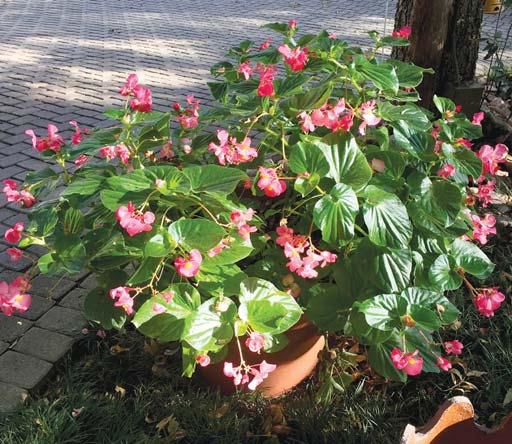Dear Neil: I'm wondering what to do with this plant? It came from Puerto Rico via a leaf and is now 4 feet tall and has to be supported. It is now producing these little plants at the edges of its leaves and it is getting ready to bloom at the top of the plant.
A: Its Bryophyllum pinnatum, a member of the Crassula family along with jade plant and kalanchoes. There are smaller types with narrower leaves that also produce tiny plantlets along their leaf margins, giving rise to their common name of "mothers of millions." They're interesting novelties for a while, but if you have them in a green-laouse you soon find them coming up in all of your other plants. Rather than tackling a huge specimen of this plant, I'd suggest starting new plants and letting them grow into more compact plants. It would be hard to tame the tall one in your photo.
MOISTURE STRESS
Dear Neil: I planted a pink dogwood last spring at our place in East Texas. It was about 7 feet tall, but most of it died back last year. New shoots came up from the bottom, but then they turned black, too. My wife gave me a white-flowering replacement (4 feet tall), but it's doing the same tiling. What am I doing wrong?
A: That's really hard to tell, but moisture stress is involved in some way. Either the plants have gotten too dry between waterings, or they may have suffered too much root loss if they were dug as a part of their being moved and planted. It's possible you might have applied too much fertilizer around them and in doing so burned their roots. It's not going to be insect-or disease-related as rapidly as it's showing up, but I can't get much closer without seeing photos and having more details.
SHADE-TOLERANT PLANTS
Dear Neil: What are some good plants for color beneath my patio cover? There isn't much sunlight under there.
A: Most of our flowering plants perform best when they have at least half a day of sunlight. Some that are more tolerant of shade, however, include wax begonias, Dragon Wing begonias and flowering tobacco. You might also plant coleus, caladiums or even crotons for tropical color. I have peace lilies blooming in our shade right now. I grow them in pots and bring them into my greenhouse each winter. I also use a wide variety of tropicals that have textural interest, including philodendrons, ferns, aglaonemas, sanseverias and airplane plants.
CEDAR TURNING BROWN
Dear Neil: Is it normal for cedar trees to turn brown on their interiors? Mine looked great early this spring, but now it's browning.
A: Oh, for a photo! So many different plants get called "cedar" trees. I'm going to assume it's eastern redcedar or one of the other junipers. Yes, they do drop their interior needles, just as most conifers do. It happens in the spring as the new growth is coming out, and it's due to the increasing shading. It's usually no indication of a problem. If you're concerned, however, do check for spider mites by thumping a twig over a sheet of white paper and watching for tiny specks to start moving about.
OAK LEAVES TURNING
Dear Neil: Why would leaves on portions of my Monterrey oaks in South Texas already be changing colors? I've hired an arborist to care for them, but I don't know what might be wrong.
A: From the photo you sent it looks like the yellowing is sprinkled all over the trees, which means that either the trunks or the roots are impacted, not just the leaves. Has any kind of weed-and-feed fertilizer been used on the lawn this spring? That could cause it. For what it's worth, I've seen Monterrey oaks hurt badly by cold damage. That was in North Texas, but this past winter's cold might have caused some of this. Ask your arborist to share his/her thoughts with you.
Have a question you'd like Neil to consider? Mail it to him in care of this newspaper or email him at mailbag@sperrygardens.com. Neil regrets that he cannot reply to questions individually.



